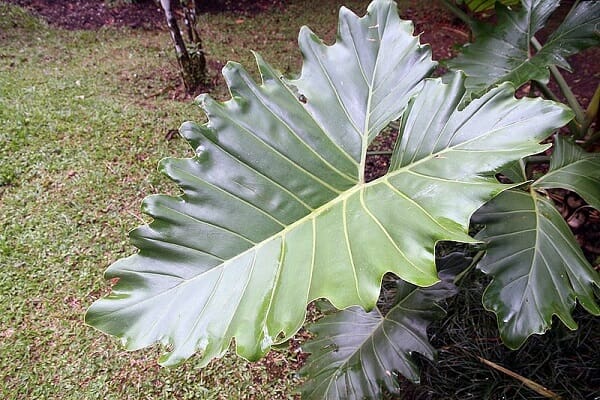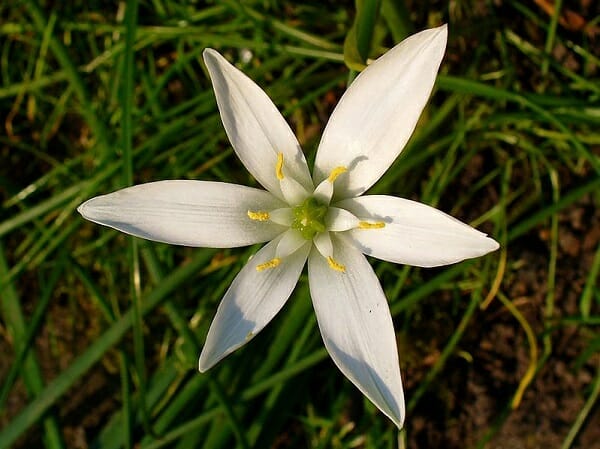The term monocot is short for monocotyledon. The cotyledon is an embryonic leaf in a seed that is the first to emerge when it germinates. Monocot seeds have one cotyledon while dicotyledons, or dicots, have two. Monocots and dicots are two types of angiosperm plants which reproduce using seeds and fruits.
There are about 60,000 species of monocot plants. The largest family are the orchids which have over 20,000 species followed by grasses with 10,000 species. Scientists believe monocots evolved as early as 140 million years ago. Based on pollen grains in the fossil record, the earliest monocots lived in the early Cretaceous period about 120-110 million years ago.
Monocots are found in a variety of habitats. They grow primarily on land but also in rivers, lakes, and ponds, mostly rooted to the bottom but sometimes free-floating. Some also live in intertidal zones near the seashore and a few are marine plants rooted in shallow areas in the ocean.
Roots
The roots of monocots cannot grow in diameter due to the lack of vascular cambium. Instead, they grow more roots at the shoot (radicle) and send out creeping shoots called runners or rhizomes (Figure 1). The coleorhiza is a tough sheath of tissue at the end of each root that protects it as it works its way through the soil. A structure called the coleoptile has the same function earlier in the growth of the root. This fibrous root system that originates from areas of the plant other than existing roots is called an adventitious root system.
The tissue at the center of monocot roots consists of xylem and phloem (vascular bundle) and it is surrounded by the cortex which is made of parenchyma cells (Figure 2). The outermost layer of the root is called the epidermis followed by the exodermis or sclerenchyma. The endodermis is an inner layer of cells surrounding the vascular bundle. The endodermis and phloem are separated by a layer of cells called the pericycle where root branching occurs.
The image above shows the root structure of a germinating monocot seed.
The image above is the cross section of a monocot root.
Leaves
Monocot leaves are usually long and narrow or oblong with parallel veins running through them (Figure 3). However, the diversity of nature reveals many exceptions to this rule. There is usually one leaf per node on the stem because the base of the leaf takes up more than half of the circumference of the stem.
Monocot leaves have an equal number of stomata (pores) on the upper and lower leaf surfaces. They also have large vascular bundles and bulliform (bubble-shaped) cells on the upper surface. Both of these features help monocots retain water during dry or stressful environmental conditions. Also, the cuticle layer is thicker on the upper leaf surface.
The image above shows the parallel veins in Philodendron wilsonii which is characteristic of monocots.
Flowers
Monocots are identified by their flowers and flower parts that are in groups of three, also called trimerous (Figure 4). About two-thirds of all monocots are pollinated by animals including bats, monkeys, deer, rodents, and birds such as hummingbirds. Therefore, the flowers are often colorful and ‘showy’ to visually attract pollinators and they use pleasing aromas for chemical attraction.
The image above shows the grass lily Ornithogalum umbellatum with its flower parts in multiples of three, characteristic of monocots.
Examples of Monocot Plants
Monocots are important plants around the world both economically and culturally. They account for many human and animal food staples like wheat, corn (Figure 5), barley, rice, and grasses. Other examples of monocot plants are bananas, sugarcane, palms, pineapples, orchids, and lilies. Monocots make up the most species grown in agriculture in terms of the amount of biomass produced.
References
- Monocotyledon. (2018, May 16). In Wikipedia. Retrieved from https://en.wikipedia.org/w/index.php?title=Monocotyledon&oldid=841518727
- Monocotyledon plant. (n.d.). Retrieved May 22, 2018, from https://www.britannica.com/plant/monocotyledon
Monocot Root, Leaf, Flower and Plants




No comments:
Post a Comment